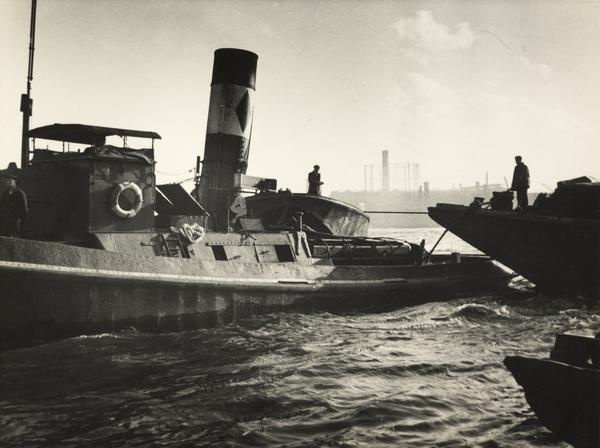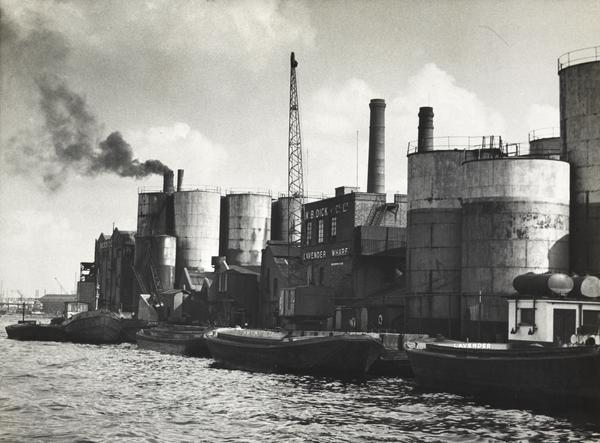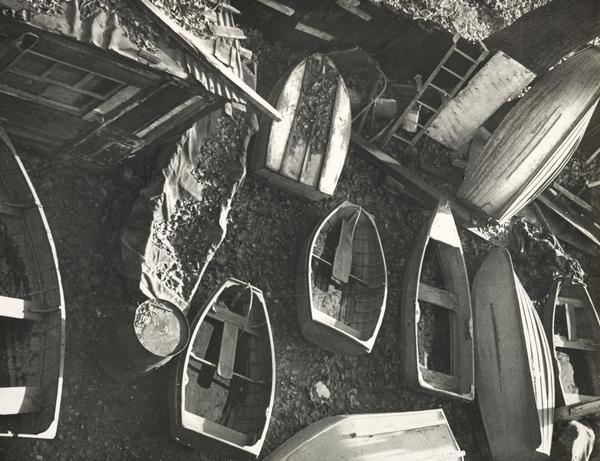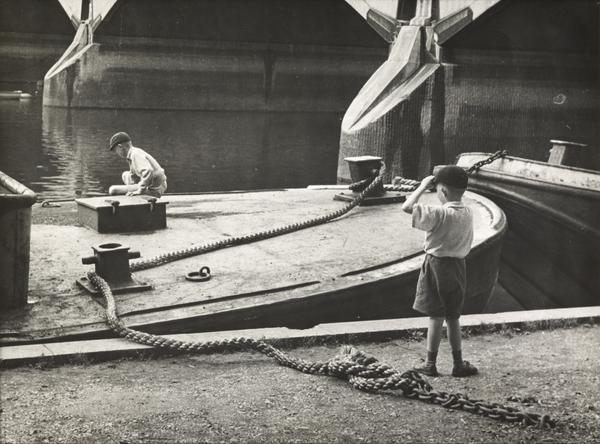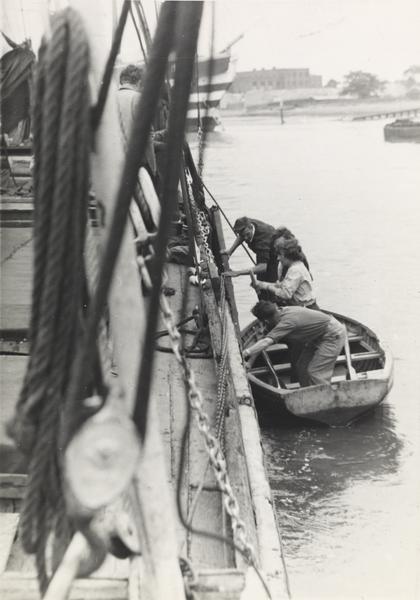Post-war photographs of the working River Thames
In the 1950s, semi-professional photographer Sandra Flett recorded trade and industry on the River Thames. Featuring steamboats and tugs, skippers and lightermen, her images capture the rhythms of daily life along this bustling working river.
River Thames
1950s

Skipper
Here’s a portrait of a skipper, the captain of a boat. Flett lived in Chiswick, west London, and could see the Thames from her house. She felt a strong connection with the river: “We have lived near [it] for years and it has become part of the background of our lives.” For her, the Thames was a “geographical backbone” linking disparate parts of London together.

Deptford Creek
Workers at Deptford Creek, southeast London, pick up empty barges to take to Victoria Dock to be loaded with wheat. Deptford Power Station is in the background. This coal-fired station started supplying electricity in 1889 and continued for almost 100 years. It was decommissioned in 1983.

Tug and lighters
A tug and several lighters by the Tower of London. A lighter is a flat-bottomed boat used for transporting cargo, like the barrels seen here. The tug in the top left – identified by its funnel – helped move other vessels by pushing or pulling them.

South West India Dock
A tug at South West India Dock, in east London’s Isle of Dogs, taking craft downriver to the Midland Railway Dock, Poplar. First opened in 1802, the West India Docks were built to handle goods from Caribbean slave plantations. The southern docks were built in the 1860s to increase the docks’ capacity and replace the failed City Canal, which once cut across the peninsula.

Learning the ropes
Flett snaps an apprentice lighterman onboard a boat at Poplar. Lightermen ‘lighten’, or unload, cargo from ships, taking it to shore or another vessel. They played a key role in the working Thames for hundreds of years. But from the 1960s, the expansion of container shipping and the closure of London’s dockyards led to a decline in their trade.

Lighters at Battersea Bridge
Two workers walk across lighters carrying loads of waste paper. The two boats in the foreground are marked Battersea Bridge and Tower Bridge.

Maintenance work
A man carries out maintenance work on a boat in the foreground, while another man sails past in the background.

Dredging the Thames
The tug in the foreground, named Danube IV, belonged to the Tilbury Dredging Company. It has just towed the large hopper barge in the background from the sea, where it had deposited mud cleared from the riverbed. Dredging helps maintain, deepen, widen or cleanse the bed and banks of the river.

Coal boats
Coal – the fuel of the Industrial Revolution – was mined across Britain and transported to London to power stations and factories. In the 1950s, Londoners also mainly heated their homes by burning coal. All this produced large amounts of dangerous, polluting smoke.

Passenger boats
A river steamer full of passengers makes its way upstream. It passes houses and moored boats and a pub called The London Apprentice, suggesting the location may be Isleworth, west of Flett’s home in Chiswick.


